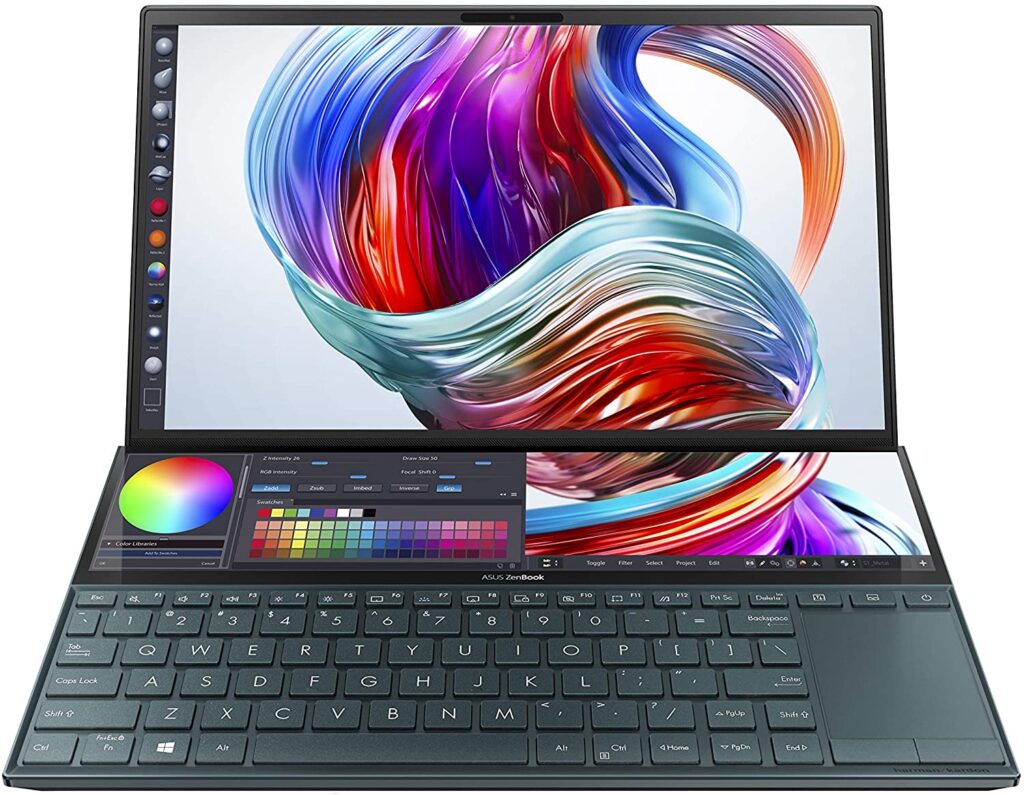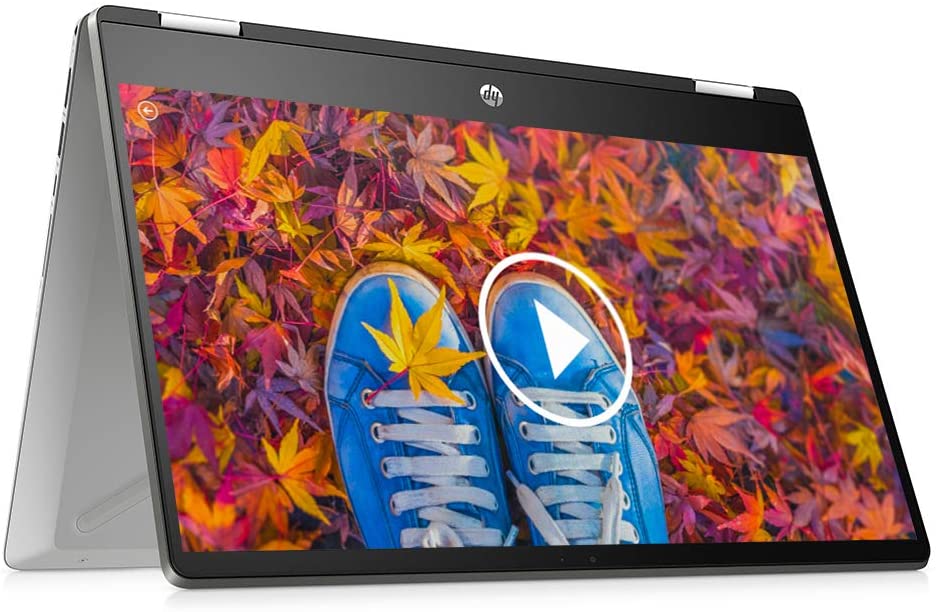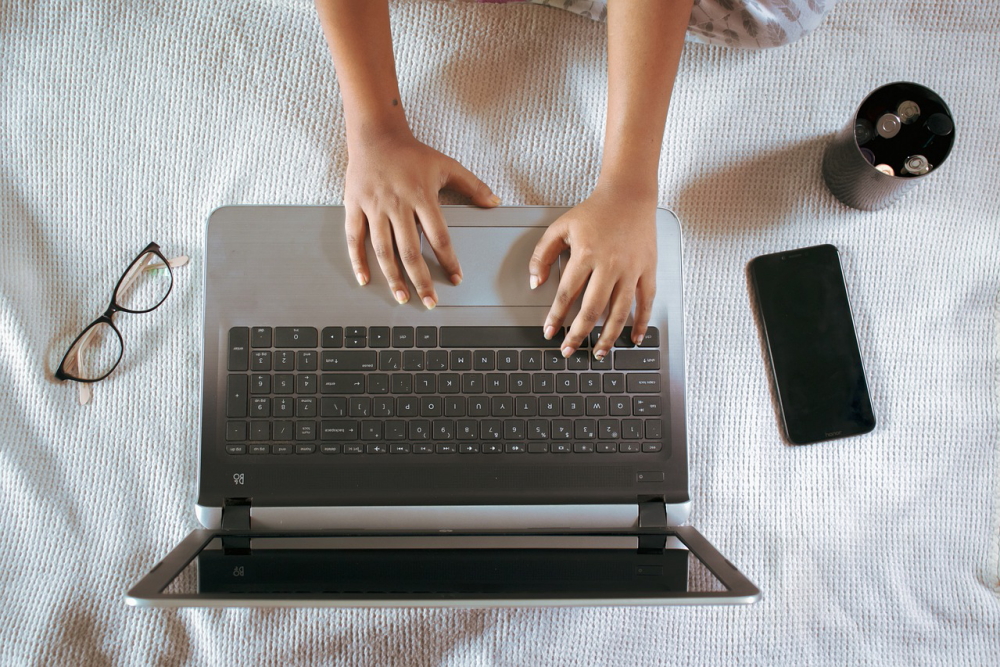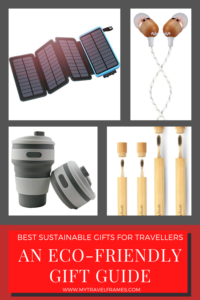If you are into blogging, more specifically travel blogging, then a laptop would be your most reliable companion. So, there is no doubt that you will be very particular while selecting your best friend while travelling. Honestly, buying a laptop that will serve all your purposes related to blogging is a tough thing to do than said. At least, for me, it was. I spent a few months before purchasing my new laptop and had to spend a considerable amount of work hours researching for it, both online and offline. In this article, I am going to share the knowledge that I gained while going through the process of buying a new laptop. I hope it will work as the most comprehensive guide for you while buying a new laptop for your blogging career.
Also read: Best sustainable gift ideas for travellers | An eco-friendly gift guide

Pin this image to save the link and read this post later!!
Table of Contents
Determine your necessity
The first thing to chalk out while buying a laptop is to determine what you need to get your blog related works done without any hiccups. To make blogging easier, you must know your gadget necessities clear and precise. If you are not confident enough to decide that, you will face a hard time figuring out what you will buy finally. To make the process of making a decision easier, I have broken down the steps in a particular manner. If you stick to this sequence, trust me, you will save a substantial amount of time beating around the bush.
Pick your platform
There are three commonly used operating systems in the market: Windows, Mac OS, and Chrome OS. Either one of these three will be the platform on which your laptop will run. You have to decide your pick right at the start.
Windows OS
Windows is the most adapted OS. Currently, Windows 10 is the version that is in use. It has many advantages over MAC OS and Chrome OS.
Windows OS is the most flexible and runs on the maximum number of laptops. The price range fluctuates in a wide margin according to specification. You imagine any specs, and you will get a laptop assembled and for sale with that specs on a Windows platform. This means you will always find it easy to get a worn-out part replaced in the future. There a many options from different companies.
The disadvantage is the more flexible your OS is, the more vulnerable it is. So, you need a good internet security plan installed in your OS.
Mac OS
There is a saying that the biggest purchaser of an Apple product is an existing Apple user. If you already used Apple products like iPhone or smartwatch, you should consider buying a laptop on Mac OS as your first choice. The functionality is similar to Windows OS with a different interface. You can also perform transactions with Apple Pay, take calls or texts from their phones and unlock the Macbooks with an Apple Watch (I do not know the benefit of the last function though).
The disadvantage is getting a replacement of any part. You need only Apple products for replacement. Also, MacBooks do not offer a touchscreen. So, you are looking for a touchscreen laptop, exclude Mac OS in the first place.
Chrome OS
Chrome OS-based laptops are also increasing their user base quickly. The system operates similar to Windows. Chrome OS is free and open source. Cost is a big advantage compared to the other two OS. Chrome OS also works faster among all three. It has the simplest interface, secured from virus attacks and compatible with all android apps. The Chromebook price is much less with a similar configuration to a MacBook or a Windows OS based laptop. But the options are limited too.
The disadvantage of Chrome OS is you need an internet connection for almost all works as you need online apps to do your job. Google Drive will be your primary storage as there is minimal storage device installed on the laptop. You can’t do heavy photo or video editing in Chrome OS as it will not support the installation of software in the system. You can play online Android games on a Chromebook but installing Windows and Mac games is not possible.
Choose the right screen size
There are only two important factors for a travel blogger while deciding on the screen size – portability and display.
The less is the screen size; the more is the portability, the less is the hardware flexibility. And the bigger the screen size, the better the display is. For photo editing and gaming, you need a large screen size. 17-18 inches are the largest available screen size for laptops at present. But that will increase the weight of the laptop. So, if you are not a big fan of photo editing and more concerned with your writing as a travel blogger, then a small screen size is better for you. It would help you to carry almost 1-1.5 kgs less on your shoulder. But remember, this weight reduction is not only by sacrificing the screen size, but it is also a sacrifice on the other hardware as well. You will not get a DVD drive and will have lesser storage.
I found 14 inches laptops most suited for my work style. It has wide options on specifications with a good display that is okay for photo editing on the go.
Think about the ergonomics
For travel bloggers, this is an important consideration. Well, it should be, especially when you spend a significant amount of time with your laptop every day.
A laptop with a good screen tilt is essential for your work. So, consider purchasing something that has at least 140-150 degrees. Trust me. This helps longtime, particularly when you work for more than hours. If your budget permits, consider buying a 2 in 1 or convertible laptop with a touch-screen keypad.
If you can not buy a touchscreen laptop or are not very comfortable working on flip notebooks, search for notebooks with a good review on the keypad. Only a user can tell you about his/her experience with a keypad. A good keyboard has a good tactile feeling with a descent dip while pressing the key (means keys are soft to touch), and the gap between two adjacent keys are wide enough to maintain smooth typing. Also, a backlit keyboard is a nice add-on if it suits your budget.
Decide your specs
Now, the most confusing part of the whole process of buying a laptop – deciding on the specs that will meet your requirement. This will upset you at times if you are on a strict budget because you will always find a better machine at a higher price. Even if you buy the laptop with the best specs in the market now, there will be better hardware available after 3 months. So, you need to be specific on how much you need and decide based on that. You can always upgrade later.
CPU
CPU is the brain of your laptop. You have to decide how much power you need based on your work. For Macbooks, the chipset is Apple’s own, and you don’t have much to choose from there.
For Windows laptops and Chromebooks, you have many options to look into. There are two major brands to choose from – Intel and AMD processors.
Intel Core i9 processors are the most recent. But for regular use, you do not need to go for i9 at present. If you are in lots of video editing, then i7 should be enough. Or else, Core i5 will serve the purpose. An i5 system will seamlessly do multiple browsing and photo editing. But do not go below i5.
An Intel Core i5 equivalent from AMD is Ryzen 4000 series, while Ryzen 4500 series give performance equivalent to the Core i7. The price is lower than the equivalent Intel series. You can get a laptop with Ryzen 4500 series at the Intel Core i5 laptop price. The only drawback that people consider while buying an AMD processor in the old days was the availability of a replacement motherboard compatible with AMD, which should not be a factor nowadays.
The Chromebooks usually come with a lower end Intel Celeron or AMD FX or E series processors.
RAM
If you edit images in photoshop or lightroom latest version, then 8GB RAM is a minimum requirement. If you edit videos a lot, then opt for at least 16GB RAM. Always buy a laptop that has an extra RAM slot or support an upgrade to the one-step higher RAM. You should reserve your extra bucks for a RAM upgrade if you need to.
Drive
The type of storage drive is an important determinant for the overall speed and performance of your laptop. Try to buy a laptop that comes with an SSD (single Storage Drive). Among SSDs, the newer PCIe x4 (aka NVME) units offer triple the speed of traditional SATA drives. If you are not very critical about the amount of storage, a drive offers, buy the lowest SSD that comes in your budget. Even a 128GB SSD will be enough to run your OS. However, I will recommend a 256GB SSD minimum if you use professional photo or video editing software. You can always buy an external hard drive to store your other files.
Display
This is a tricky part. You should give weightage on display while buying a laptop. If you are purchasing a laptop with a Core i5 processor and 8GB RAM, do not compromise on screen resolution. A full HD display should be considered as a minimum. Even Chromebooks these days offer 1920×1080 pixel resolution. You will find many laptops of recognised brands with excellent configuration but 1366×768 pixel display. Do not get fooled. Talking from a personal experience.
Graphic
If you are not editing high-end videos or a not a high-end computer game lover in your free time, an integrated memory card with your chipset (that share the same memory as your chipset) is enough. But if you require either of the two I mentioned above, go for a dedicated Nvidia or AMD graphic processor.
Ports and connectivity
This is something that many people do not give attention to and repent later. There should be at least three USB ports in your laptop, of which one must be a USB Type-C port. The USB Type-C will help you to connect to universal chargers and docks. There should be a port for headphone jacks, an HDMI port and an Ethernet port. An SD card slot will be a bonus. It will save a headache many times while you travel.
Set your budget
Now the monetary part starts. After you set your specs, it is time to set a budget. These days you can get a refurbished product at a much lower price. The retailers even offer six months warranty with that. But, let’s focus on a new product.
Budget deadline
If your budget is around $600-$700 (₹45000 – ₹50000), you can get an Intel Core i5, 8GB RAM, and 256GB SSD in the Windows 10 platform. The graphics will be integrated, and the screen size will be 14-15.6 inches. The tricky part is you might compromise on display and keyboard/screen ergonomics. If you can pay 100 dollars extra, you will get an FHD screen and a flip screen for another 200 dollars. So, this configuration altogether with a flip screen costs you around $1000 (₹75000).
Now the funny part, as soon as you spend $900 (₹65000), you can also get an Intel Core i7, 16GB Ram and dedicated Nvidia graphics, including an FHD screen, provided you give up the flip/convertible screen idea. Usually, the keyboards are backlit in this budget—all of these within a Windows OS platform.
At $1200, you might start smelling the freshness of the new Macbook Air as well. But the specs will be basic. If you spend another $200, you will get a Macbook Air with optimal specs for your blogging plus photography and video editing. For a Macbook pro and max configuration in Windows 10 OS, you have to go above $1700-$1800.
For Chromebooks, if that is enough for you, your budget should not cross $600 maximum.
Choose your brand
Choosing your brand for a Windows OS laptop is as difficult as setting your specs right. The renowned brands like HP, Asus, Lenovo, Dell and Microsoft all have laptops to meet your configurations. The prices are very comparable as well. The price of HP, Asus laptops are ₹4000-₹5000 more costly in the Indian market than Lenovo and Dell laptops with the same configuration.
So, before you make your brand final, you should keep two things in mind –
- The after-sale service of that brand in your city
- The usual warranty and the added warranty that the brand is offering at that moment
Read reviews from online shops like Amazon and Flipkart, specifically negative reviews and see if you can find anything specific about the after-sale service of the brand in your city. Also, talk to your friends and co-bloggers about what brand they use and what are their experiences.
Explore the products both online and offline
Now, once you set your budget, it is time to explore the products online and offline. The first step is to compare the prices of the laptops with your desired hardware specifications.
Compare prices online
This is a recurrent process. It would be best if you compare the prices of your pick from different online retailers. If you are going to buy a MacBook, then your job becomes easy. But, if you are searching for a Windows OS laptop, note the prices of other brands aside from your desired one.
Read a lot of reviews
You must read a lot of reviews from third-party websites and user reviews from the online seller platforms. Reading negative reviews helped me a lot to learn about the drawbacks of a specific product. Also, take note of the return policy and seller rating before you finalise your purchase.
Visit a few shops to see the product running
After thorough online research, select 3-4 specific products and go to a computer store to physically see the products. I usually spend a day or two checking the products running and compare their performances. You must check the specs table, display, sound system, keyboard software installed while the laptop is running. Also, enquire about the routine and extended warranty before you start bargaining on price.
Finally, buy your pick and celebrate!!
Now, enough hard work done before you buy your most trusted companion for the coming years. It is time to buy your pick. Decide whether you buy it online or offline and go for it. Did I help you to you save some bucks from your budget? Well, it is time to spend that on your favourite pizza and coffee. CONGRATULATIONS!!!
My favourite five picks in 2021
Apple Macbook Air (November 2020)

- OS – Mac OS
- Screen size – 13.3 inches
- Weight – 1.25 kgs
- CPU – Apple M1 chip, 8-core CPU
- RAM – 8GB DDR4
- Drive – 256GB (SSD)
- Display – 2560×1600
- Graphic processor – Apple M1
- Ports and connectivity – Two USB 4 ports, 802.11ax Bluetooth
- Bonus features – Magic Keyboard, Touch ID, Force Touch trackpad
ASUS ZenBook Duo UX481

- OS – Windows 10 Home
- Screen size – 14 inches
- Weight – 1.5 kgs
- CPU – Core i5 10th generation
- RAM – 8GB DDR4
- Drive – 512GB (SSD)
- Display – 1920 x 1080 (Full HD)
- Graphic processor – NVIDIA GeForce MX250 (2gb RAM)
- Ports and connectivity – 3 USB 3.0 ports, Bluetooth, 802.11ax
- Bonus features – touch display with 178 Degree wide-view technology, Full-size backlit with 1.4mm key travel
HP Pavilion x360 (2021)

- OS – Windows 10
- Screen size – 14 inches
- Weight – 1.6 kgs
- CPU – Core i5 11th generation
- RAM – 8GB DDR4
- Drive – 512GB(SSD)
- Display – 1920 x 1080 Pixels
- Graphic processor – Integrated Intel Iris Xᵉ Graphics
- Ports and connectivity – 3 USB 3.0 ports, 802.11ax, Bluetooth
- Bonus features – convertible laptop, touchscreen, SD card reader
HP 15 Thin and Light (2021)

- OS – Windows 10 Home
- Screen size – 15.6 inches
- Weight – 1.7 kgs
- CPU – Core i5 11th generation
- RAM – 8GB DDR4
- Drive – 512GB (SSD)
- Display – 1920×1080
- Graphic processor – Integrated Intel UHD graphics
- Ports and connectivity – 2 USB 3.0 ports, 802.11ac, Bluetooth
Lenovo IdeaPad S145

- OS – Windows 10 Home
- Screen size – 15.6 inches
- Weight – 1.85 kgs
- CPU – AMD Ryzen 3500U
- RAM – 8GB DDR4
- Drive – 512GB (SSD)
- Display – 1980×1020
- Graphic processor – Integrated AMD Radeon Vega 8
- Ports and connectivity – 2 USB 3.0 ports, 802.11ac, Bluetooth
Head-to-Head Comparison of All Five Models
| Laptop Model | Apple Macbook Air (late 2020) | ASUS ZenBook Duo UX481 | HP Pavilion x360 (2021) | HP 15 Thin and Light (2021) | Lenovo IdeaPad S145 |
|---|---|---|---|---|---|
| Price | Amazon.in Amazon.com | Amazon.in Amazon.com | Amazon.in Amazon.com | Amazon.in Amazon.com | Amazon.in Amazon.com |
| OS | Mac OS | Windows 10 Home | Windows 10 Home | Windows 10 Home | Windows 10 Home |
| Screen size (inches) | 13.3 | 14 | 14 | 15.6 | 15.6 |
| Weight (kgs) | 1.25 | 1.5 | 1.6 | 1.7 | 1.85 |
| CPU | Apple M1 chip, 8-core CPU | Core i5 10th generation | Core i5 11th generation | Core i5 11th generation | AMD Ryzen 3500U |
| RAM (GB) (DDR4) | 8 | 8 | 8 | 8 | 8 |
| Drive (GB) | 256 | 512 | 512 | 512 | 512 |
| Display | 2560×1600 | 1920 x 1080 (Full HD) | 1920 x 1080 (Full HD) | 1920 x 1080 | 1920 x 1080 |
| Graphic processor | Apple M1 | NVIDIA GeForce MX250 (2gb RAM) | Integrated Intel Iris Xᵉ Graphics | Integrated Intel UHD graphics | Integrated AMD Radeon Vega 8 |
| Ports and connectivity | Two USB 4 ports, 802.11ax Bluetooth | 3 USB 3.0 ports, Bluetooth, 802.11ax | 3 USB 3.0 ports, 802.11ax, Bluetooth | 2 USB 3.0 ports, 802.11ac, Bluetooth | 2 USB 3.0 ports, 802.11ac, Bluetooth |
| Bonus features | Magic Keyboard, Touch ID, Force Touch trackpad | touch display with 178 Degree wide-view technology, Full-size backlit with 1.4mm key travel | convertible laptop, touchscreen, SD card reader | ||
| Buy now | Buy now | Buy now | Buy now | Buy now |
Book your trip: Resources
- Flight
Use Skyscanner or Google Flights to book your flight.
- Accommodation
Tripadvisor and Agoda are perfect for booking your hotel. If you want to stay in a hostel, then Hostelworld would greatly help you find one at your convenience.
- Travel Insurance
World Nomads is perfect for travel insurance. You can get comprehensive protection from them. Let them take care of unexpected situations while you concentrate on your trip.
- Package Tour and Activities
You can book a package tour from G-Adventures and Viator. They are a reputed company arranging small group tours and customising them per your requirements. You can also use Get Your Guide to book your private transport, city tours, heritage walks, food walks and other experiences like a cooking lesson or a Yoga session.
Disclosure: Some of the links below are affiliate links. You will be directed to another third-party website when you click those links. If you purchase anything via those links, I will earn a referral bonus without any extra cost to you.




Pingback: Best sustainable gift ideas for travellers | An eco-friendly gift guide - My Travel Frames